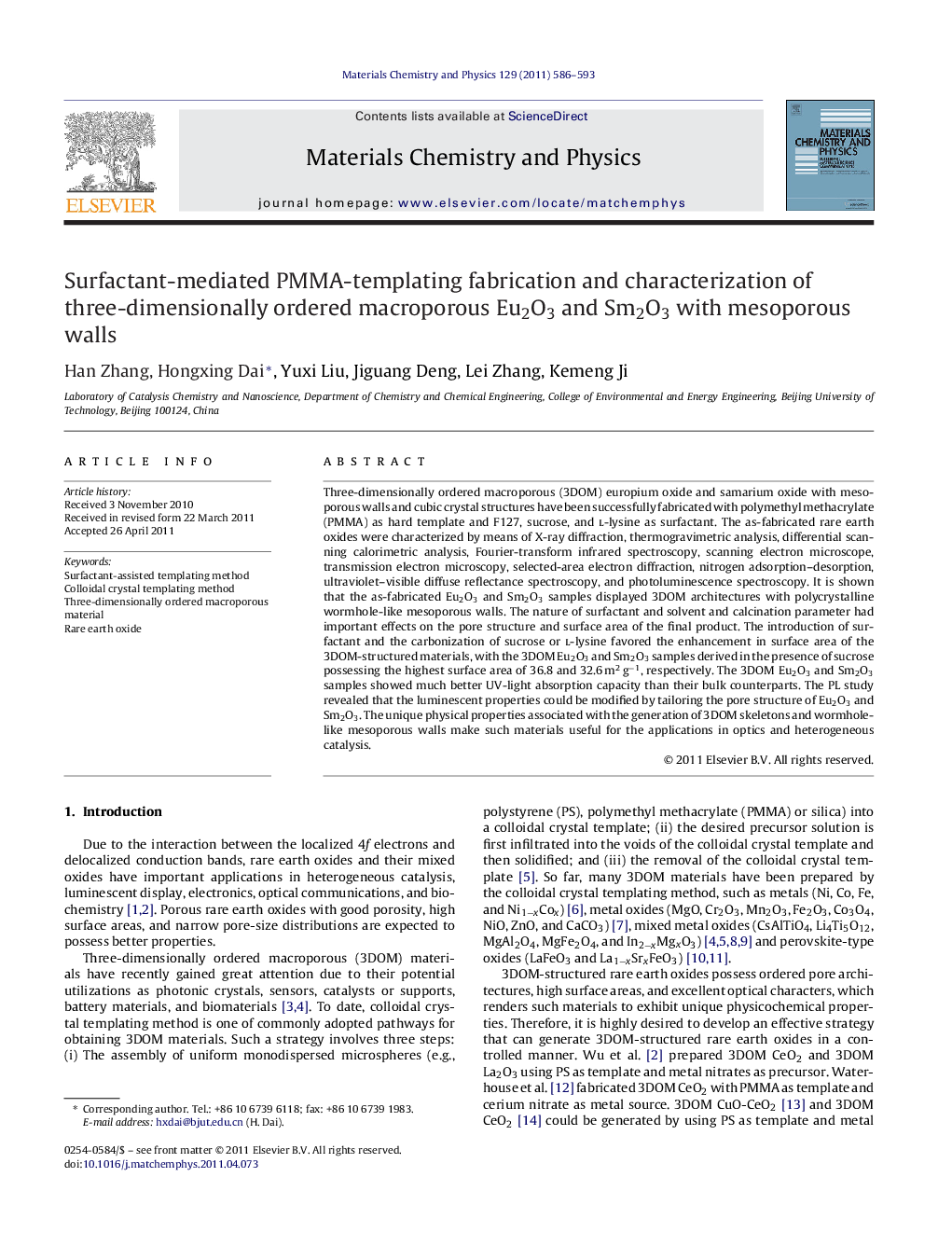| Article ID | Journal | Published Year | Pages | File Type |
|---|---|---|---|---|
| 1524577 | Materials Chemistry and Physics | 2011 | 8 Pages |
Three-dimensionally ordered macroporous (3DOM) europium oxide and samarium oxide with mesoporous walls and cubic crystal structures have been successfully fabricated with polymethyl methacrylate (PMMA) as hard template and F127, sucrose, and l-lysine as surfactant. The as-fabricated rare earth oxides were characterized by means of X-ray diffraction, thermogravimetric analysis, differential scanning calorimetric analysis, Fourier-transform infrared spectroscopy, scanning electron microscope, transmission electron microscopy, selected-area electron diffraction, nitrogen adsorption–desorption, ultraviolet–visible diffuse reflectance spectroscopy, and photoluminescence spectroscopy. It is shown that the as-fabricated Eu2O3 and Sm2O3 samples displayed 3DOM architectures with polycrystalline wormhole-like mesoporous walls. The nature of surfactant and solvent and calcination parameter had important effects on the pore structure and surface area of the final product. The introduction of surfactant and the carbonization of sucrose or l-lysine favored the enhancement in surface area of the 3DOM-structured materials, with the 3DOM Eu2O3 and Sm2O3 samples derived in the presence of sucrose possessing the highest surface area of 36.8 and 32.6 m2 g−1, respectively. The 3DOM Eu2O3 and Sm2O3 samples showed much better UV-light absorption capacity than their bulk counterparts. The PL study revealed that the luminescent properties could be modified by tailoring the pore structure of Eu2O3 and Sm2O3. The unique physical properties associated with the generation of 3DOM skeletons and wormhole-like mesoporous walls make such materials useful for the applications in optics and heterogeneous catalysis.
Graphical abstractThree-dimensionally ordered macroporous (3DOM) Eu2O3 and Sm2O3 with mesopore walls can be fabricated by the surfactant-assisted PMMA-templating method. 3DOM Eu2O3 obtained with sucrose possesses a surface area up to 37 m2 g−1. 3DOM Eu2O3 and Sm2O3 show strong UV-light absorption. By tailoring the pore structure of Eu2O3 and Sm2O3, the luminescent property can be modified.Figure optionsDownload full-size imageDownload as PowerPoint slideHighlights► 3DOM Eu2O3 and Sm2O3 with mesopore walls are fabricated by the PMMA-templating method. ► Surfactant addition and carbonization process favor the formation of the 3DOM structure. ► 3DOM Eu2O3 obtained with sucrose possesses a surface area up to about 37 m2 g−1. ► 3DOM Eu2O3 and Sm2O3 show excellent UV-light absorption. ► The luminescent property can be modified by tailoring the pore structure of Eu2O3 and Sm2O3.
